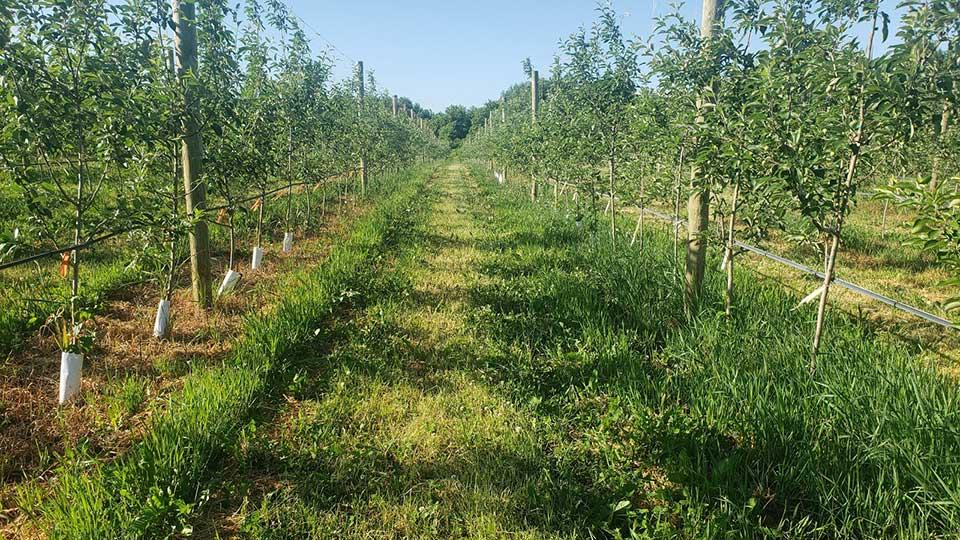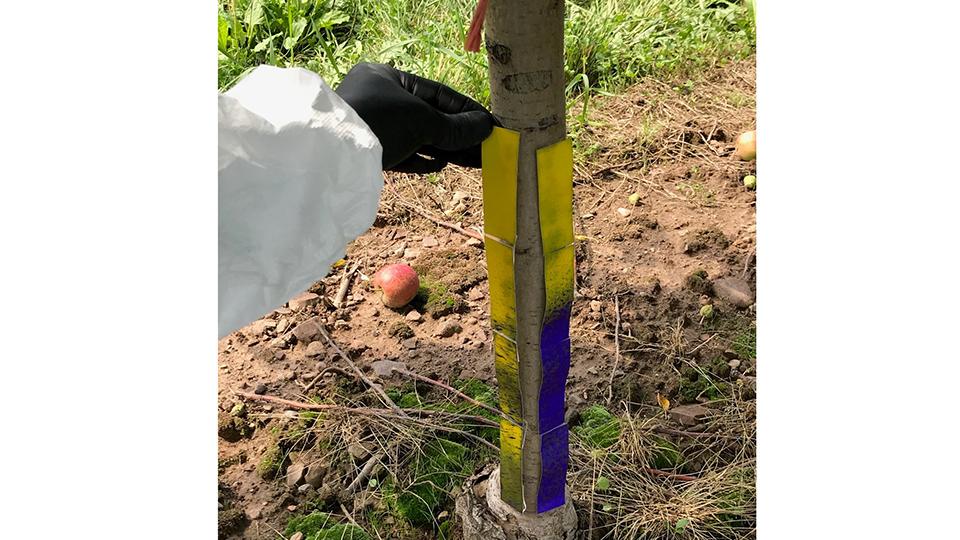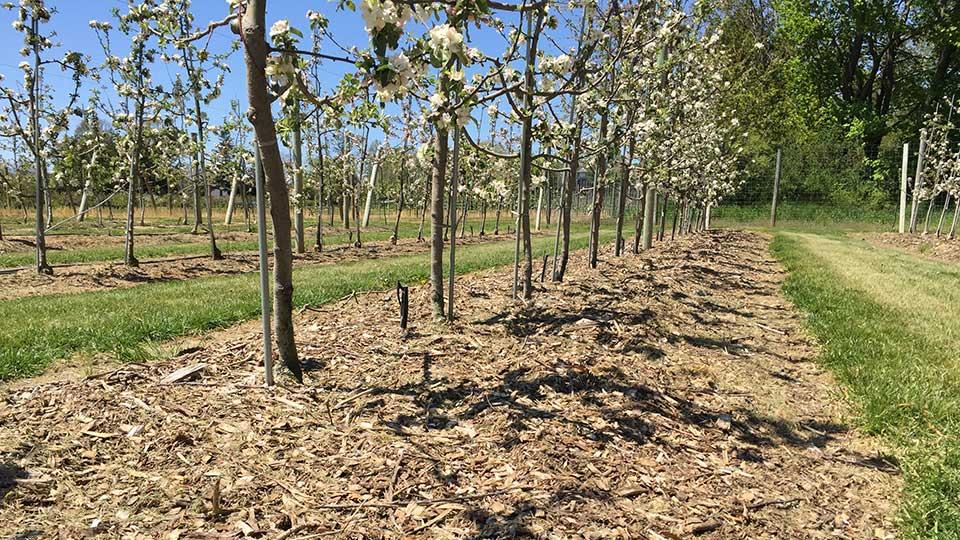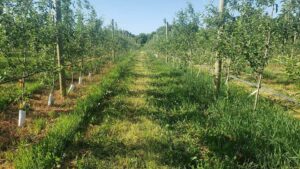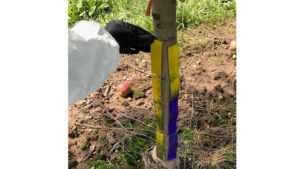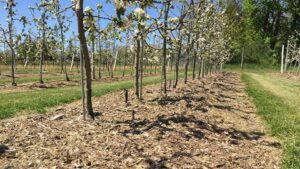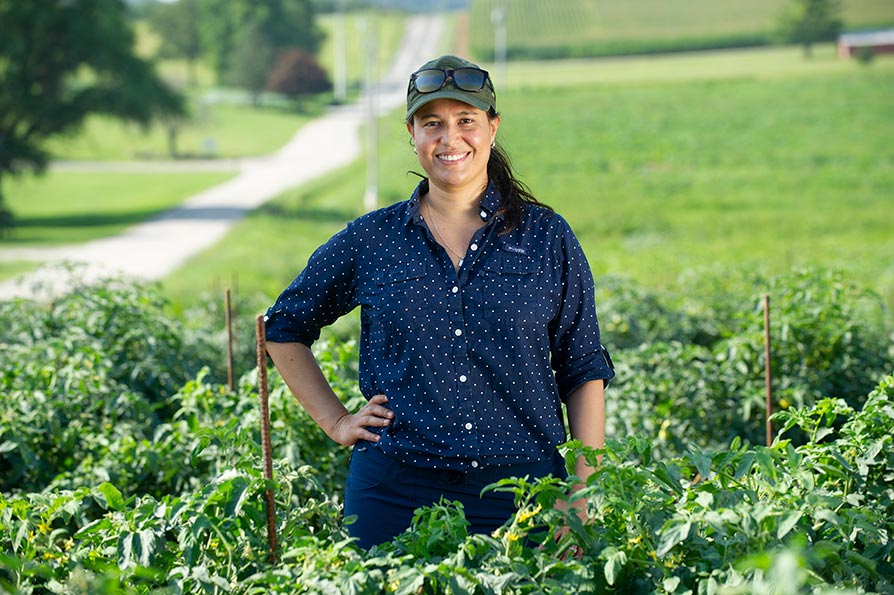Optimal Soil Health and Weed Control in the Orchard a Balancing Act
The growers spoke. And Cornell University listened. In response to a post-event survey, attendees of a 2020 apple integrated pest management (IPM) workshop let Cornell Cooperative Extension (CCE) know exactly what weed control topics they found most intriguing. Their top three selections were intertwined: 1) herbicide impacts on soil health; 2) timing of herbicides to maximize control; and 3) how to manage perennial species.
Two years later, in January, Cornell dedicated a session of its annual New York State Tree Fruit Conference to the theme of maintaining high-quality orchard soils. The first of several presentations posed the marquee question: Should I apply residual herbicides in the spring or fall?
Mike Basedow, a Tree Fruit Specialist with CCE’s Eastern New York Commercial Horticulture Program, provided the answer — the first of many that he and colleagues from Cornell and peers from Virginia Tech and Washington State University would share over a two-hour span. For him, it was familiar territory.
“When I started working with growers in Extension, a common question I was asked was how they could better manage their weeds, particularly those challenging perennial species, like quackgrass, Canada thistle, poison ivy, and field bindweed,” Basedow says. “In the past, growers often used glyphosate, but a number of farms have since moved away from this material due to concerns about its repeated use on the long-term growth of the trees.
“In addition, Janet van Zoeren, an IPM specialist with Cornell Extension’s Lake Ontario Fruit Program, was being approached by growers about how they could better manage their soil quality over the long term. This led us to want to study the effects of different herbicide application strategies on long-term control of orchard weeds as well as what effects these strategies have on tree and soil health.”
The results of Basedow and van Zoeren’s ongoing study, as well as further research out of Cornell, are as follows:
SPRING OR FALL?
The notion of applying preemergent products in the fall is neither new nor out of favor. Research conducted at Cornell from 2014-16 showed excellent weed control by several such products in that scenario. Growers, meanwhile, are likely more utilitarian in their support of fall applications. As Basedow notes, it would mean one less item on their already long to-do lists come spring.
Basedow and his colleagues are now comparing fall and spring applications of commonly used preemergent herbicide materials tank-mixed with a postemergent product, along with a third treatment that relies solely on postemergent herbicides. In the process, they are evaluating the impacts that these strategies have on the trees and soil.
In Peru, NY, on the eastern side of the state, the first two of three treatments involve a combination of Prowl (pendimethalin, BASF), Chateau (flumioxazin, Valent USA), and Forfeit (glufosinate, Loveland Products) — the first applied in early November; the second in late March. The third treatment, postemergent Rely (glufosinate, BASF), was applied in mid-May. Farther west, in Albion, NY, the first two treatments combine Prowl, Chateau, and Interline (glufosinate, United Phosphorus), the latter of which also serves as the postemergent treatment.
With regard to seedling germination, the fall and spring preemergent treatments experienced similar results. Both had fewer seedlings than the postemergent-only treatment on average across the weed-free period of May through July. “Which is great,” Basedow says, “because it gives you some extra flexibility with your timings.”
Fall treatments prevented early winter annual germination that the spring treatments had missed, although the fall treatment did not last quite as long as the spring treatment in the control of summer annuals. “We recommend targeting preemergent material timings based on what your annual species mix is,” Basedow says.
With regard to overall weed cover, in Western New York there was less weed cover overall after the fall treatment.
“The key reason for that is there were so many winter annuals there, and by the time that the spring treatment went on, a few of those annuals had already germinated and were able to grow through our postemergent applications the rest of the season,” Basedow says.
In Eastern New York, by contrast, there were no differences in weed cover among fall and spring preemergent treatments until very late in the season, and weed cover was sometimes lowest in the postemergent-only treatment. Instead of the preemergent timings, weed cover was most affected by the timing of the follow-up postemergent applications.
“That is likely due to the fact we had so many perennials in the east,” Basedow says. “It was really more of a question of when were we knocking back those perennials with those post-emergent applications.”
IMPACTS ON SOIL HEALTH
Basedow details the Cornell Soil Health Test soil quality indicators after one year of trials:
- Surface hardness: The hardness of the top 6 inches of soil decreased most in the postemergent-only plots, but other seasonal factors are likely in play, Basedow says.
- Organic matter: Considered a key soil quality indicator impacting many soil functions, organic matter decreased the most in the postemergent applications at both sites.
- Aggregate stability: This measure of how well soil particles hold together under intense rains decreased across all sites, with no consistent trends between sites.
- Soil respiration: No consistent trends were evident in this measurement of the amount of CO2 released from soil microbes.
“We didn’t see a lot of differences after this first season, and honestly I don’t think we were expecting to after a single year,” Basedow says. “When we’re talking about soil quality, we’re expecting to see long-term changes, so it could be a little bit longer before we start to see any clear trends.”
DO TREE GUARDS WORK?
The same preemergent trials in Peru and Albion were used to evaluate the effects of Tyvek trunk guards on herbicide contact to the trunk, tree growth, and tree health.
In August, water-sensitive paper was used to determine where herbicide was deposited on trunks and to see whether Tyvek trunk guards reduced this deposition. Upon concluding that the range of zero to 6 inches from the ground received virtually all of the spray compared to 6 to 12 inches, the Cornell team, led by Basedow and van Zoeren, designed 10-inch-tall Tyvek trunk guards and stapled them on half of the trees in
the research block prior to applying another spray.
The results were “very dramatic” in terms of preventing spray from reaching the trunks, van Zoeren says. The guards led to 98% less contact in Western New York and 99% less in Eastern New York.
The tree guard treatment showed increased trunk growth in Eastern New York, although there was no statistical difference in Western New York. In addition, there were no statistical differences among the fall, spring, and postemergent-only treatments. As for canker development, neither the herbicide treatments nor the tree guards had any effect at either site. Likewise, there were no differences in tree survival.
“We can prevent the spray from contacting the trees by using these trunk guards; however, we were not yet able to show that potential spray contact is having a negative impact on tree survival,” van Zoeren says. “These are long-term effects, and we don’t expect to see differences after just one or two years.”
WOOD CHIPS OR HERBICIDE?
Away from Peru and Albion, in an apple orchard on the East End of Long Island, Deborah Aller, a Cornell Extension Associate, captained a 2019-20 case study that explored whether large woodchips (greater than 1 inch) could serve as a complement to herbicides — more so than as an alternative — to reduce such applications.
Long Island tree fruit producers are limited by what pesticide products they can use compared to growers in the rest of the state, Aller says. At the same time, growers have concerns about the use of woodchips and other groundcovers because of the potential impact they may have on orchard health and fruit quality. However, prior to this study, this had not been evaluated under the maritime production conditions typical of the East End.
Aller’s study compared four treatments: the grower standard herbicide, woodchips, woodchips plus herbicide, and control. No statistical differences among the four treatments were seen in a variety of categories, including yield, apple diameter, trunk diameter, foliar carbon and nitrogen content, and chlorophyll content (SPAD value).
In terms of weed cover, the woodchip treatment — with and without herbicide — fared well across the 2019 growing season, whereas the success of the mid-June herbicide application was brief. In 2020 the woodchip-only treatment performed well through early June but declined in success later in the season. Meanwhile, the woodchip-herbicide combination treatment fared better, mirroring the success of the herbicide-only treatment.
“The woodchips really do help, while not impacting tree health and fruit quality, and they can be used in combination with an herbicide,” Aller says. “There is the potential to reduce herbicide use to maybe only one application when woodchips are used in combination. We are also still evaluating the soil health benefits.”
With regard to application frequency, some studies have shown that growers need to re-apply mulch treatments every three years, Aller says, but that is not enough.
“We found that you need it every year,” she says. “This may have something to do with the slightly warmer climate present on the East End of Long Island compared to other growing regions in New York state.”





